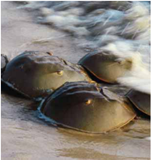| Introduction to the LAL test Limulus Amebocyte Lysate (LAL) tests detect and quantify bacterial endotoxins extracted from the outer membrane of gram negative bacteria. The critical component of the LAL reagents used in endotoxin tests is derived from blood cells (amebocytes) of the horseshoe crab, Limulus polyphemus. It contains the proteins of the blood clotting mechanism, which is triggered by endotoxins. LAL reagents are primarily used to test for endotoxins in injectable pharmaceuticals, biological products, and medical devices. They are also used in renal dialysis centers and a wide range of other applications. LAL tests are described in the Bacterial Endotoxins Test chapter in the United States Pharmacopeia (Chapter <85>) and in the equivalent chapters in the European Pharmacopoeia (Chapter 2.6.14) and the Japanese Pharmacopoeia (General Tests, No. 4.01). LAL test Methods There are three principal LAL test methods: Gel-Clot assay, Turbidimetric assay and Chromogenic assay. The latter two may be grouped together as photometric methods as they require an optical reader. Selecting an LAL method When deciding which LAL test method is to be used, the following questions can be asked: - What is the available budget?
- What are the regulatory requirements, if any?
- What type of product or sample is going to be tested?
- What test sensitivity is required? (What is the endotoxin limit specification for the sample?)
- Is electronic storage of data desired?
If the budget is limited, the gel-clot method is the least expensive method as no optical reader is required. Also, the gel-clot method may be the method of choice for opaque samples, suspensions or colored samples, though dilution of the sample may enable use of the photometric methods. For users with a non-incubating optical reader, an endpoint chromogenic test may be the best choice. As with other photometric methods, this will provide printouts of results and electronic storage of data. The kinetic methods (chromogenic and turbidimetric) provide the widest detection range and sophisticated software. The photometric methods offer the greatest sensitivity, allowing detection of low endotoxin concentrations and greater dilutions of sample, which is important for overcoming interference. |






